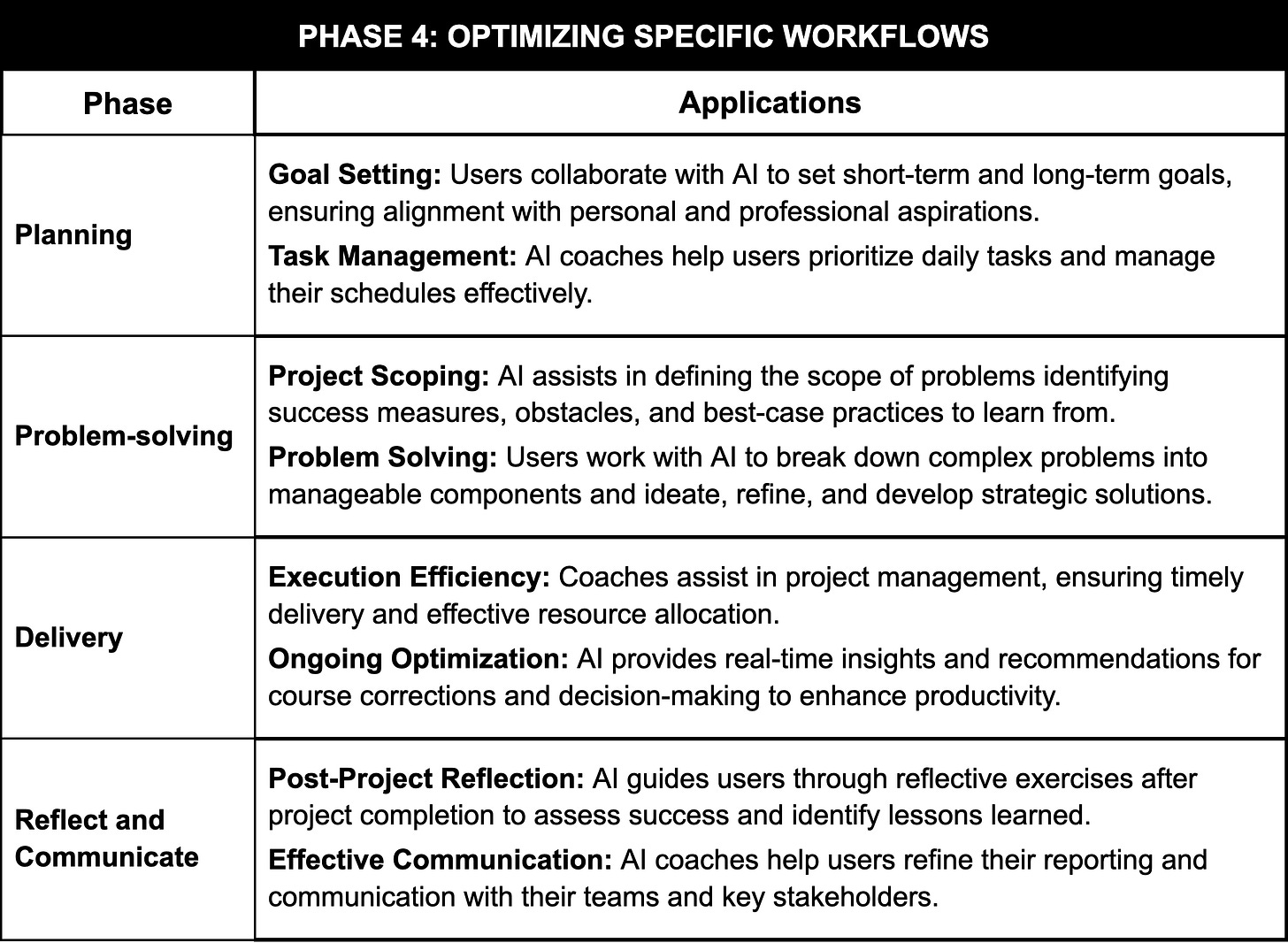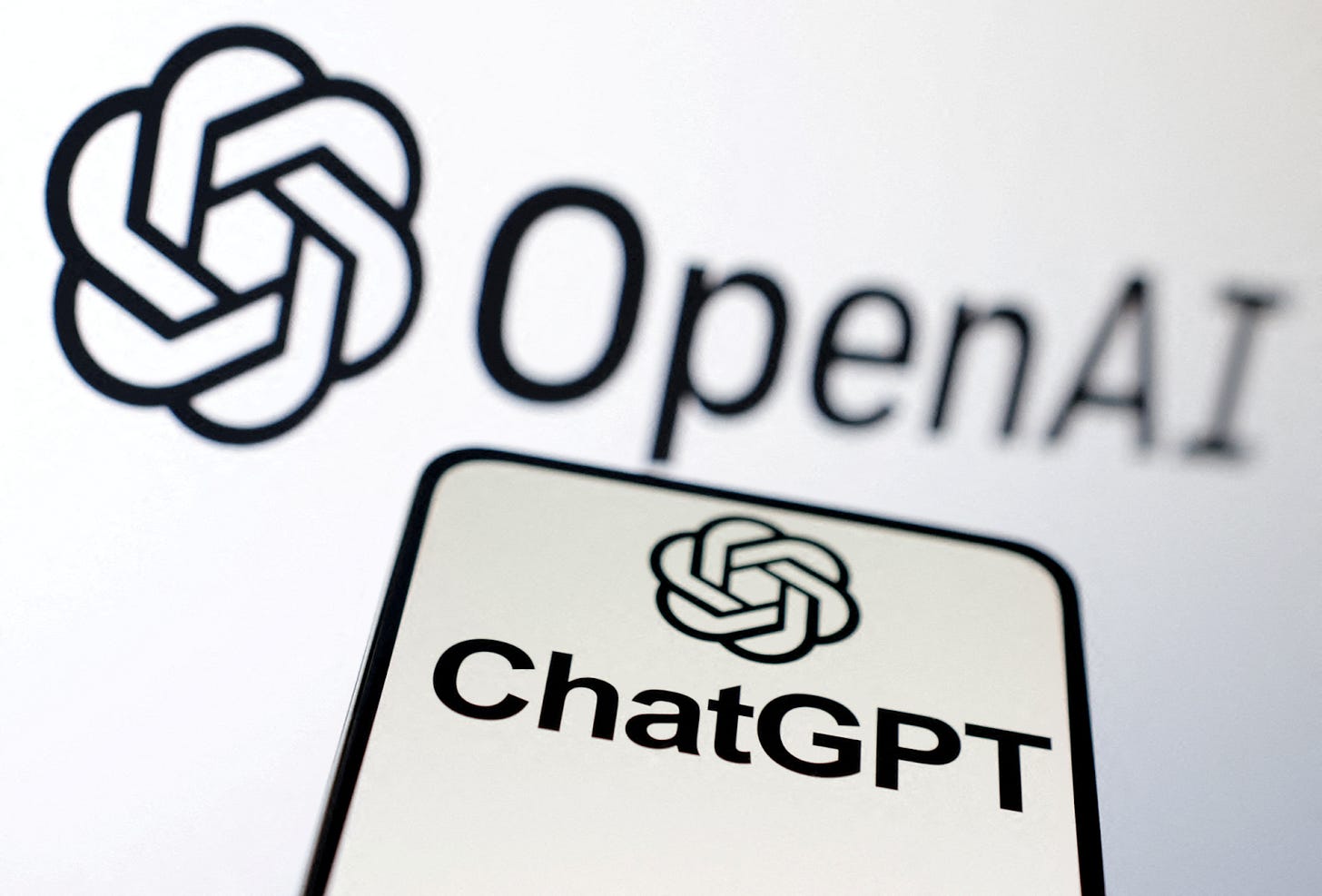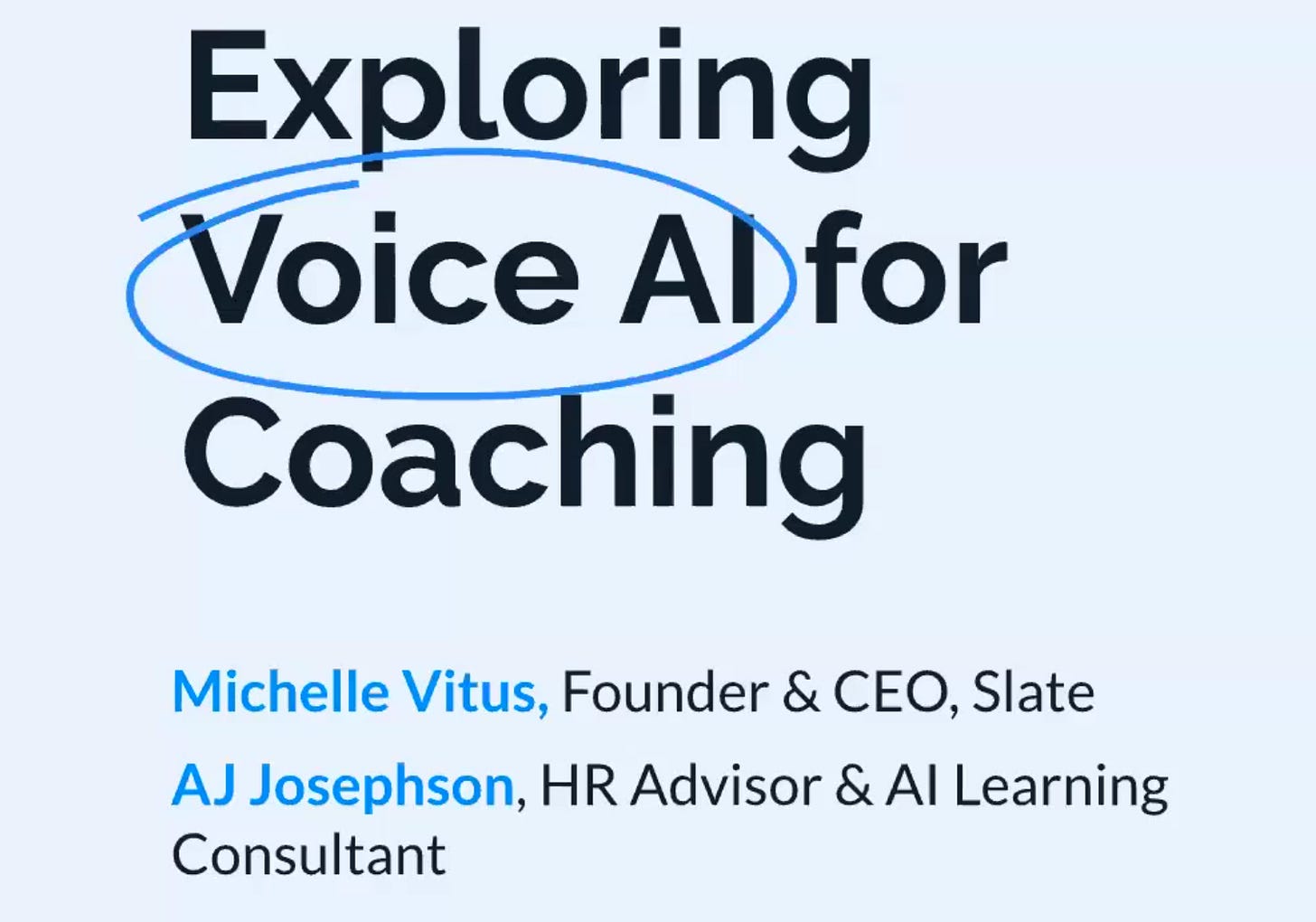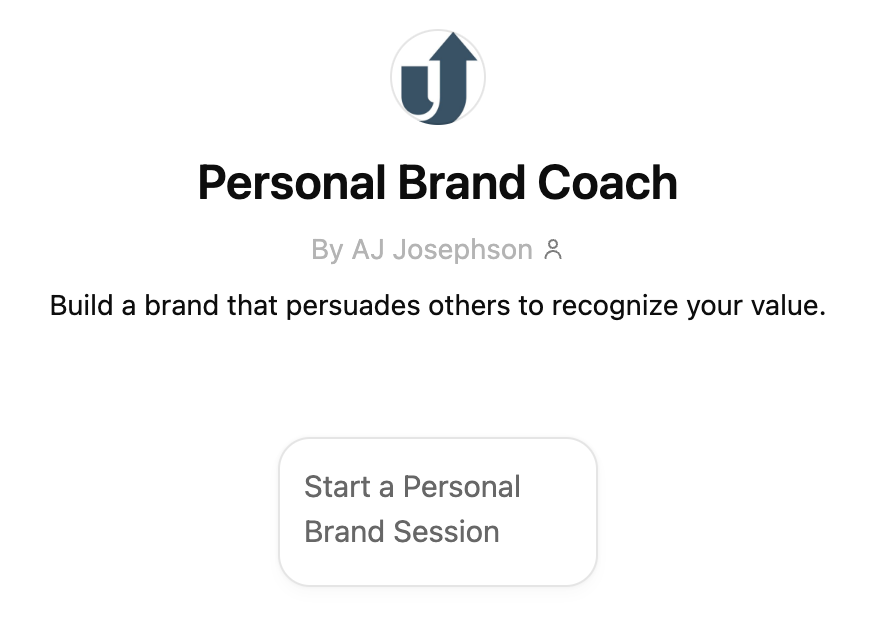Rise of the AI Coach
HPP4: How Voice AI will democratize coaching into every aspect of our lives
Coaching as an Unfair Advantage
Michael Lewis, the best-selling author of Moneyball and The Big Short, tells the story of Harold Abrahams, a British sprinter who won the gold medal at the 1924 Olympics with the help of a coach. However, the coach was not allowed to enter the stadium because “In 1924, professional coaches were taboo. They were considered a form of cheating—the steroids of the age.”
The irony, Lewis points out, is that the same elite who once shunned coaching as unsporting now embrace it wholeheartedly. “The old aristocracy is dead,” he says. “Now everybody thinks it’s good to try. Everybody competes, and the people who take their coaching most seriously are the aristocrats.” Structured guidance is no longer a dirty secret but a crucial advantage. Coaching has permeated mainstream culture—from executive coaches in corporate boardrooms to SAT prep tutors for students seeking an edge in college admissions.
Despite its growing presence, coaching remains underutilized. Even amongst CEOs, only around 40% currently have executive coaches. On the home front, only 30% of couples have engaged in shared counseling at some time. And what tiny fraction of professionals get coaching for areas as important as their personal productivity, career transitions, salary negotiations, or caring for their children or aging parents? The few who do may be considered eccentric, but their gains are differentiating.
“Back when coaching didn’t do very much, it didn’t matter who got it and who didn’t. But coaching is clearly getting better and better, and spreading into more areas of life, which means it matters a great deal who gets it and who does not. And the people who don’t get it are often the ones who need it most."
Michael Lewis, Against the Rules, “The Unfair Coach”
Now, Voice AI coaches are poised to bridge these gaps, offering on-demand, nearly free coaching for all kinds of personal and professional growth. Imagine a coach available anytime—on your laptop, phone, or wearable device—ready to discuss, critique, practice, and plan. Coaching will become the interface wrapper for all the software you currently use and a menagerie of new tools built “coaching first.”
This democratization of coaching will be the most significant transformation in how the world learns since the rise of the Web. It will be a wave that some of us ride early but ultimately raises all future generations. The Web transformed how we access information; Voice AI coaching will transform how we synthesize and apply that information, enabling us to grow, work, and thrive in ways that were once unimaginable.
Why Her?
When we think of Voice AI, it’s hard not to conjure images from Spike Jonze’s 2013 film Her, where a soft, human-like voice (portrayed by Scarlett Johansson) guides Theodore (Joaquin Phoenix) through his work, relationships, and existential questions. In the film, voice-based AI transcends being a mere tool and becomes a trusted source of reflection and guidance. Our association with Her became even more concrete when OpenAI released Sky, a voice so similar to Johansson’s that it led to a lawsuit and the voice’s eventual retraction.
Her felt futuristic, but a decade later, Voice AI is here, with platforms like OpenAI offering a shockingly natural Voice-to-Voice experience. The technology’s ability to understand speech and deliver human-like responses has advanced remarkably. This week, OpenAI rolled out its Advanced Voice Mode to paid users, offering speech and interactivity so lifelike and customizable that OpenAI slowed its deployment to address critical risks. Their safety teams had raised concerns around the Mode’s ability to emulate any voice shared by the user convincingly, its increased ability to persuade users on political topics, and its actions that built misplaced high-trust emotional bonds with users.
To demonstrate how fluid and immersive this technology has become, I recorded a live discussion on this article with a Voice-based GPT. The natural dialogue and depth of inquiry are impressive.
This Voice-to-Voice experience builds on established capabilities of Large Language Models (LLMs) like ChatGPT and Gemini, to answer questions on myriad topics, offer cogent suggestions, and follow structured conversations. These skills are powered by vast training data, ongoing learning from user interactions, and instructions provided by custom GPT designers. Voice AI transforms these capabilities from a point solution to a new platform for optimizing the work and learning experience.
AI has brought other exciting learning modalities. Text or audio AI summaries can be integrated into all major content readers and web browsers. Google’s NotebookLM goes further, offering that “with one click, two AI hosts start up a lively deep dive discussion based on your sources. They summarize your material, make connections between topics, and banter back and forth.”
However, individualized coaching- executive coaching, therapy, or an Oxbridge tutor- has always been the gold standard for personal development. A skilled coach can create interactivity, customization, and motivation that broadcast methods cannot replicate. Yet, the inherent one-to-one nature of traditional coaching has always been its limitation. Expert coaching is too expensive even to be used broadly, and even when in use, participants would benefit from far greater contact hours if cost were not a factor. With Voice AI coaching, these constraints are disappearing. It will offer near-perfect simulations of human coaching—on-demand, scalable to millions, and available at a fraction of the cost—unlocking personalized guidance for everyone, anytime.
The Last Revolution: Democratizing Information
The history of learning technology is a story of expanding access to information. Before the printing press, books were rare and available only to the elite. Centuries later, computers and CD-ROMs brought multimedia learning experiences into homes and classrooms. The early internet's websites, forums, and blogs offered unprecedented access to peer-to-peer knowledge sharing and niche communities. And in the new millennium, mobile apps and video learning through YouTube and massive online course sites brought access to world-class lectures to the four billion adults globally with smartphones.
This democratization of information has revolutionized learning by creating access to “omni-information”—the ability for anyone, anywhere, to access free information on virtually any topic with just a few clicks. The key beneficiaries of this wave have been self-driven learners, often called “autodidacts.” These individuals know what they want to learn and how to find it. They can synthesize knowledge from structured information sources like eBooks, wikis, and online courses and are self-motivated to learn broadly. But simple sounding skills like “knowing what to Google”, “having good reading habits”, and “following smart accounts” belie a more profound ability to access the omni-information. It enabled them to accelerate their growth, thrive in knowledge-driven fields, and often bypass traditional education systems.
Despite the vast availability of information, self-driven learners represent only a small minority of working professionals—perhaps less than 10%. The rest of us stand at the library door, unsure where to begin, unable to turn our learning intentions into consistent practice, or feeling disconnected from the materials we can find.
The Next Revolution: Democratizing Coaching
The next breakthrough in learning technology builds on the omni-information revolution by offering access to “omni-coaching”—interactive AI coaches available for every topic, role, and growth stage. These coaches will be seamlessly integrated into software and personal practices, providing affordable, on-demand, voice-based coaching at every step of our learning and workflow cycles.
While the last wave empowered self-driven learners, the next will enable “coachable learners.” These individuals may not instinctively know what they need to learn, but a coach can guide them to set direction, synthesize personalized information, and respond to customized prompts that enhance their learning process. As a result, they will develop faster and more comprehensively across various personal and professional domains.
This new wave has the potential to engage far more learners than omni-information ever did. Whether through sports coaches, personal trainers, or mentors, many of us have experienced how a coach can motivate us to take actions we might otherwise resist. In the same way, omni-coaching will dramatically expand the scope of learning for coachable individuals. While omni-information primarily benefited a small segment of autodidacts, omni-coaching can reach nearly half of all working professionals. This would represent the largest activation of learning in human history, fundamentally reshaping organizations and even our broader culture.
What makes Voice AI a powerful coach?
The mechanics of how this new technology creates incredible learning outcomes are worth understanding. I will explore them through the lenses of three big ideas drawn from the learning-related roles in business, academia, and education that formed half of my career.
We love to be immersed in experience
From studying with Chris Dede, Harvard’s Professor of Instructional Technology, I learned that immersion is a central goal of virtual learning. Dede describes immersion as the “suspension of disbelief that one is ‘inside’ a digitally enhanced setting.” Immersion engages learners, making them active participants rather than passive consumers of content. Voice AI coaching achieves this by simulating the context of a specific natural conversation so convincingly that users respond as if interacting with a human. This elevates the learning challenge, eliciting user response, reflection, ideas, and realistic anxiety. This immersion not only brings the user back to practice but enables better transfer of learning into real-world contexts.
We want to be catered to
While immersion is a powerful precondition for learning, personalization is the true grail of education. Personalization promises to empower learners by giving them control over what, when, and how they learn, adapting experiences to their unique needs, preferences, and learning styles. While working with Teach for Australia and the University of Melbourne, I saw firsthand that even the most innovative educators could only really differentiate instruction for groups within a class. Meeting each learner exactly where they were seemed like an unrealizable ideal—a direction rather than a concrete goal.
Voice AI coaching is now poised to deliver on this promise. LLMs like ChatGPT and Gemini can generate tailored curricula on nearly infinite topics that adapt in real time to each individual's growth stage and practice, generating guidance, practice, coaching questions, and feedback customized to their styles and preferences. As discussed later in the piece, the accessibility of enterprise-grade coaching products for each use case at a near-free price point is just a matter of time.
We learn through phases that can be accelerated
David Kolb’s Experiential Learning Cycle became popular in the pragmatic world of corporate education because it aligns with the real-world challenges employees face. It suggests that knowledge is generated from experience by individuals moving through four stages: experiencing, reflecting, thinking, and acting. An unlimited Voice AI coaching resource can deepen each stage and efficiently guide learners through them.
At the experiencing stage, Voice AI provides immersive role-plays and simulations, allowing learners to engage with scenarios like giving feedback or resolving conflicts. With its ability to access work in real-time—such as through messaging apps or design tools—Voice AI offers contextual guidance that sharpens the learning process. In the reflecting phase, AI guides users through analytical questions, helping them process their actions and outcomes and prompting reflections on offline experiences. In the thinking stage, Voice AI compares new insights with past experiences, acting as a thought partner to clarify ideas and integrate them into broader frameworks. Finally, during the acting phase, it supports experimentation with new strategies, guiding users through testing and refining approaches based on their ongoing reflections and learning.
Current Applications for VoiceAI Coaches
Voice AI coaches already create substantial value in areas where they can form realistic simulations of work and learning. This technology excels in two key areas: Role-Playing Conversational Skills and Facilitating Personal Practices. The tables below outline each phase and provide relevant examples.
Applications around Role-Playing Conversational Skills work well because the voice-to-voice experience convincingly simulates human interaction. By customizing LLM instructions for specific use cases and drawing on vast training libraries, these coaches replicate realistic scenarios and offer expert feedback on various conversational skills.
Voice coaches can also currently excel at Facilitating Personal Practices by hosting structured agendas, drawing from a diverse library of prompts and practices to keep sessions fresh, thoughtfully asking and responding to user questions, and providing positive feedback to maintain users’ motivation to practice. Coaches guide users through daily and long-term practices, helping them establish routines that build toward larger goals.
Coming Applications for VoiceAI Coaches
The next phases will apply Voice AI Coaches through Enabling Interpersonal Relationships and Optimizing Individual Workflows. Cultural and technical advancements are required for Voice AI coaches to integrate successfully into interpersonal relationships. Although the core AI technology is already sufficient, gaps remain in regulatory compliance (especially in patient care) and social comfort with AI agents (in interpersonal collaboration and guest care). Nevertheless, start-ups and established companies are rapidly advancing user experience and enterprise security to make these applications a reality.
Optimizing Individual Workflows will also require further developments for widespread adoption. One of the most anticipated is giving models visual access, whereby AI coaches can see and interact with information on a user’s screen. Already, “multi-modal” capacity means that models like GPT4o and Gemini can incorporate images- like analyzing screenshots from an app. Making these views automated and prompted by AI reasoning will dramatically enhance the coach’s ability to provide contextual guidance, making it even more personalized and practical.
Advanced assessments are another critical area for growth. As AI systems become more sophisticated, they can validate their coaching effectiveness through continuous assessments, providing users with more profound insights into their progress and targeted guidance. Lastly, integration with wearables, such as smart glasses, will bring AI coaching into previously offline spaces. With the ability to perceive and understand more of the user’s environment, AI coaches can provide real-time feedback in even more contexts, from work tasks to fitness and beyond.
Try Voice AI coaching
The potential of Voice AI coaching becomes clear once you experience it. Here are some simple ways to get a sense of this technology in action:
First, try using native ChatGPT to coach you. It’s straightforward:
Sign in to the ChatGPT app on iPhone/Android.
Tap the soundbar icon (၊၊||၊) in the lower right corner. If you don’t yet have the advanced voice model, click the headphones (🎧) icon to use regular Voice Mode.
You will be taken to a screen with a Blue or Black circle.
Start speaking
You can ask ChatGPT anything. Here are a few prompts to try:
“I want to practice negotiating a salary raise.”
“Coach me on setting ambitious goals for the year.”
“Help me learn more about [topic] and coach me through understanding it.”
Adding “custom instructions”, in the form of a few pages of prompt guidance, elevates the depth and structure of coaching the model can provide. Here’s a demo of a Feedback Coach I developed with Slate, a leading Silicon Valley coaching platform. The coach is a CustomGPT that helps managers practice giving difficult feedback, using a specific learning model and phasing to reflect on and enhance their skills.
You can also fully interact with a coach based on custom instructions through a “Personal Brand Coach” I built. This coach guides users through a seven-step personal branding process inspired by Harvard Business School's Professor Jill Avery and Rachel Greenwald.
What Will We Do with It?
We are on the brink of the largest mass activation of learners in human history. My two-year-old will enter a workforce where AI coaches are integrated into every facet of professional life. But only some will embrace the first wave. These pioneers are already experimenting with AI coaching while others wait for best practices to emerge from the cloud of new products. Still, more will be left behind—both organizations stuck in workflows of the last century and individuals lacking the coachable skills or motivation to access these tools.
For all the big-picture opportunities, the personal impact is the most intriguing. We often judge ourselves harshly for not doing things we know we’re capable of. Despite good intentions, action doesn’t always follow. Because we believe we can do it on our own, we hesitate to seek support or tools that would ensure success. Voice AI coaching can help bridge this "theory-practice gap," making it easier than ever to accomplish our goals and grow in ways that matter most. A whole lot of "I should" just became "I can."
"I feel like I can be anything with you." Theo’s line from Her captures the sense of limitless possibility that comes with deeply immersive, personalized, and efficient learning experiences. The potential for growth across any dimension is immense. But this raises a crucial question: What ideas and ideologies—conventional or radical, intentional or accidental—are embedded within these new instructors, and how will they, in turn, shape who we become?













